#jboss
Explore tagged Tumblr posts
Text







#DidYouKnow These Middleware Platforms?
Swipe left to explore!
💻 Explore insights on the latest in #technology on our Blog Page 👉 https://simplelogic-it.com/blogs/
🚀 Ready for your next career move? Check out our #careers page for exciting opportunities 👉 https://simplelogic-it.com/careers/
#didyouknowfacts#knowledgedrop#interestingfacts#factoftheday#learnsomethingneweveryday#mindblown#middleware#middlewareservices#middlewaretools#jboss#jbosseap#apachekafka#ibmwebsphere#tibco#oracleweblogic#redhat#api#data#didyouknowthat#triviatime#makingitsimple#learnsomethingnew#simplelogicit#simplelogic#makeitsimple
0 notes
Text
Wildfly Jboss success startup
started in 23090ms - Started 957 of 1193 services (430 services are lazy, passive or on-demand)
0 notes
Text
Software Test Engineer
Software Development Engineer in Test 12 month contract 600 per day 3 days on site South DublinThe ideal candidate would have the following skills: Knowledge of advanced authentication techniques on mobile and web based platforms Web Services – REST/XML – Advanced Level. J2EE Web Application/Web Services with JBoss & WebSphere. Advanced skills and knowledge of Spring. Cloud Development…
0 notes
Text
Senior Java FSD
Job title: Senior Java FSD Company: Virtusa Job description: Key Responsibilities:Develop and maintain web applications using Java Spring Boot and Spring Cloud Design and implement user interfaces using HTML CSS JavaScript Angular and React Write and maintain unit tests using Junit and Mockito Deploy and manage applications on servers such as JBoss WebLogic Apache and Nginx Ensure application…
0 notes
Text
RHCA: The Ultimate Certification for Red Hat Experts
Introduction
Red Hat Certified Architect (RHCA) is the pinnacle of Red Hat certifications, proving your expertise in enterprise Linux, automation, cloud, DevOps, and more. If you're a Red Hat professional looking to elevate your career, RHCA is the ultimate goal.
What is RHCA?
The RHCA (Red Hat Certified Architect) is a top-tier Red Hat certification designed for IT professionals who have already obtained the Red Hat Certified Engineer (RHCE) or Red Hat Certified Specialist credentials. It validates advanced skills in Red Hat technologies across multiple domains, including:
Enterprise Linux
Cloud and Virtualization
DevOps and Automation
Security and Identity Management
Application Development and Middleware
Why Pursue RHCA?
1. Industry Recognition & Credibility
RHCA certification demonstrates mastery in Red Hat technologies, making you a highly sought-after expert in enterprise IT environments.
2. Career Growth & Higher Salaries
Certified professionals often secure better job opportunities, leadership roles, and higher salaries compared to non-certified peers.
3. Versatile Specialization Paths
RHCA offers flexibility, allowing you to tailor your certification path based on your expertise in infrastructure, DevOps, cloud, or application development.
4. Demand for Red Hat Experts
With enterprises shifting to open-source solutions, Red Hat skills are in high demand, ensuring long-term career stability and growth.
RHCA Certification Path
To become an RHCA, candidates must pass at least five Red Hat Certified Specialist exams in their chosen domain. Some popular specialization paths include:
RHCA in Infrastructure (RHEL, Ansible, Security, OpenStack, Virtualization)
RHCA in Enterprise Applications (JBoss, OpenShift, Microservices)
RHCA in DevOps (Ansible, OpenShift, CI/CD, Containerization)
How to Prepare for RHCA
Gain Hands-on Experience: Practical knowledge of Red Hat technologies is crucial.
Take Red Hat Training Courses: Official Red Hat training helps you understand exam objectives.
Set Up a Home Lab: Use Red Hat Enterprise Linux (RHEL) and Ansible to practice real-world scenarios.
Join Red Hat Communities: Engage with experts in forums and discussions.
Use Exam Guides & Practice Tests: Red Hat provides official study materials and practice exams to help you prepare.
Final Thoughts
RHCA is the ultimate certification for IT professionals looking to master Red Hat technologies and advance their careers. Whether you're focusing on infrastructure, automation, or cloud, achieving RHCA status sets you apart as a true Red Hat expert.
Are you ready to take your Red Hat expertise to the next level? Start your RHCA journey today!
For more details www.hawkstack.com
0 notes
Text
Senior Product Engineer
concepts. Experience in Cloud architecture (AWS) Experience in JBoss, Apache Tomcat Experience in Angular, Node and React JS… Apply Now
0 notes
Text
Best SailPoint Online Training for Career Growth - Visualpath
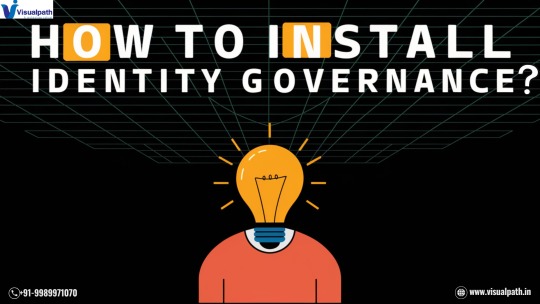
How to Install IdentityIQ for Identity Governance?
SailPoint Online Training IdentityIQ (IIQ) is a leading identity governance and administration (IGA) solution that helps organizations efficiently manage user identities, roles, and access rights. The installation of IdentityIQ forms the foundation for enabling organizations to leverage its robust features such as identity lifecycle management, access governance, and compliance controls. This guide provides a detailed overview of the IdentityIQ installation process, offering key insights into prerequisites, installation steps, and best practices SailPoint Online Training.
Prerequisites for Installation
Check that the following conditions are met before proceeding with the installation
Hardware Requirements:
Processor: Minimum 4-core CPU, recommended 8-core or higher for production environments.
Memory: At least 8 GB of RAM for testing environments and 16 GB or more for production.
Disk Space: A minimum of 100 GB of free disk space is required to store logs, configurations, and application data.
Software Requirements:
Operating System:
Supported OS includes Linux (preferred) and Windows Server.
Ensure all relevant OS patches and updates are installed.
Java Development Kit (JDK):
Install the supported JDK version for IdentityIQ (usually JDK 11 or 17 based on the release).
Set the JAVA_HOME environment variable appropriately.
Application Server:
Apache Tomcat (recommended) or other supported application servers such as JBoss or WebLogic.
Database:
Supported databases include Oracle, Microsoft SQL Server, MySQL, or PostgreSQL.
Configure the database with appropriate schemas and user permissions.
Additional Requirements:
Internet access for downloading dependencies and updates.
Administrative privileges for performing installations.
IdentityIQ installation files and license keys provided by SailPoint.
Steps to Install IdentityIQ
Follow these steps to successfully install IdentityIQ:
Step 1: Prepare the Environment
Ensure the server meets the hardware and software prerequisites.
Create a dedicated user account for running the IdentityIQ application to enhance security.
Verify that the database server is up and running, and create a database schema specific to IdentityIQ SailPoint Online Training.
Step 2: Install the Application Server
Download and install Apache Tomcat (or your chosen application server) on the server.
Configure the server.xml file within Tomcat to include specific ports and context paths for IdentityIQ.
Allocate sufficient JVM memory in the Tomcat startup scripts (catalina.sh or catalina.bat).
Step 3: Deploy the IdentityIQ Application
Obtain the IdentityIQ WAR file from SailPoint.
Place the WAR file into the webapps directory of your application server.
Start the application server to extract the WAR file and deploy IdentityIQ.
Verify the deployment by navigating to http://:/identityiq in a web browser.
Step 4: Configure the Database
Navigate to the IdentityIQ WEB-INF directory.
Locate and edit the iiq.properties file to configure database connection parameters:
database.url=jdbc:<database_type>://<host>:<port>/<database_name>
database.username=<db_username>
database.password=<db_password>
Test the database connection using the IdentityIQ database utilities.
Execute the database scripts provided in the IdentityIQ installation package to initialize the schema.
Step 5: Initialize IdentityIQ
Launch the IdentityIQ setup wizard by accessing the application URL.
Provide the necessary configurations, such as:
Administrator account details.
Email server configuration for notification alerts.
.LDAP/Active Directory integration if applicable.
Complete the wizard to initialize the IdentityIQ instance.
Best Practices for Installation
Plan for Scalability: Configure the hardware and software to handle future growth in user accounts and access policies.
Use a Dedicated Server: Deploy IdentityIQ on a separate server to prevent conflicts with other applications.
Secure Connections: Use SSL/TLS for all communication between clients, servers, and databases.
Backup Configuration Files: Maintain regular backups of critical files like iiq.properties, database schemas, and logs.
Follow Documentation: Refer to the official SailPoint documentation for version-specific details.
Post-Installation Checklist
Verify that IdentityIQ is accessible via the configured URL.
Test basic functionalities such as user login, access requests, and reporting.
Enable monitoring tools to track application performance and usage.
Apply patches or updates provided by SailPoint to address known issues SailPoint Online Training.
Document the installation process for future reference and audits.
Troubleshooting Tips
Deployment Issues:
Check the Tomcat logs for errors during WAR file deployment.
Ensure the JAVA_HOME and database configurations are correct.
Database Connectivity:
Validate the database credentials and network connectivity.
Ensure the JDBC driver is compatible with your database.
Application Performance:
Monitor JVM heap usage and adjust memory allocation if necessary.
Disable unnecessary services or features to improve responsiveness.
Installing IdentityIQ is a critical first step toward implementing effective identity governance. This guide provides a clear roadmap for organizations to complete the installation process smoothly and efficiently. With a properly configured IdentityIQ instance, businesses can enhance their security posture, streamline compliance, and optimize identity management processes.
Visualpath is the Leading and Best Institute for learning in Hyderabad. We provide Sailpoint Identity IQ Online Training. You will get the best course at an affordable cost.
Attend Free Demo
Call on – +91-9989971070
Blog: https://topsailpointcourse.blogspot.com/
What’s App: https://www.whatsapp.com/catalog/919989971070/
Visit: https://www.visualpath.in/sailpoint-online-training.html
#SailPoint Online Training#Sailpoint Course#Sailpoint Training in Hyderabad#Sailpoint Online Course#Sailpoint Training Institutes in Hyderabad#Sailpoint Identity IQ Course Online#Sailpoint Identity IQ Online Training
0 notes
Text
0 notes
Text
Top Features of Red Hat for Application Development
In today’s fast-paced digital landscape, application development demands robust, scalable, and reliable platforms to deliver seamless user experiences. Red Hat, a leader in open-source solutions, offers an array of tools and services tailored for application development. Whether you're a developer, architect, or IT leader, Red Hat's ecosystem equips you with the resources needed to accelerate innovation. Let’s explore the top features of Red Hat that make it a preferred choice for application development.
1. OpenShift Container Platform
Red Hat OpenShift is a Kubernetes-powered platform designed for containerized application development. It provides:
Streamlined Deployment: Automate the build, deployment, and scaling of applications.
Hybrid Cloud Flexibility: Develop and deploy applications across public, private, or hybrid clouds.
DevOps Integration: Integrated CI/CD pipelines to support agile development methodologies.
2. Enterprise-Grade Middleware
Red Hat offers JBoss Middleware, which provides a suite of solutions for building modern applications, including:
Business Rules Automation: With Red Hat Decision Manager for smarter decision-making.
API Management: Seamless integration of APIs for microservices architecture.
Data Virtualization: Real-time access to data across multiple sources.
3. Developer-Friendly Tools
Red Hat fosters productivity with a range of developer tools and services:
CodeReady Workspaces: A developer workspace in the cloud to write, test, and debug code.
Application Runtimes: Support for Java, Node.js, and other popular runtimes for modern development.
Red Hat Developer Program: Access to free developer subscriptions, tools, and learning resources.
4. Security and Compliance
Red Hat ensures that your applications are secure from development to deployment:
SELinux Policies: Secure your applications at the OS level.
Container Security: Integrated vulnerability scanning and policy enforcement for containerized applications.
Enterprise Support: Regular updates and patches to meet compliance requirements.
5. Accelerated Innovation with Automation
Automation is critical for efficiency and scalability, and Red Hat excels with:
Ansible Automation Platform: Automate repetitive tasks to reduce errors and save time.
GitOps Practices: Integration with OpenShift to enable declarative infrastructure management.
Cloud-Native DevOps: Tools for automating application delivery pipelines.
6. Scalability and High Availability
Red Hat’s architecture ensures your applications are always up and running, no matter the demand.
Horizontal and Vertical Scaling: Meet dynamic workloads efficiently.
Failover and Load Balancing: Maintain uptime and distribute traffic seamlessly.
Cloud-Native Infrastructure: Support for large-scale, distributed systems.
7. Comprehensive Ecosystem Support
Red Hat’s ecosystem includes partnerships and integrations to support developers at every step:
Partner Ecosystem: Collaboration with cloud providers like AWS, Azure, and Google Cloud.
Marketplace Solutions: Pre-integrated tools and services for faster deployments.
Community-Driven Innovation: Contributions from the open-source community for continual improvements.
8. Insights and Analytics
Red Hat Insights delivers predictive analytics and actionable intelligence to optimize performance and minimize risks:
Proactive Monitoring: Identify potential issues before they occur.
Performance Optimization: Recommendations for resource management.
Compliance Reporting: Stay audit-ready with detailed reports.
Conclusion
Red Hat is more than a platform; it’s an ecosystem that empowers application developers with cutting-edge tools and frameworks. Its commitment to open source, security, and innovation makes it an indispensable partner for organizations aiming to build scalable, modern applications.
Embrace the power of Red Hat for your application development needs and lead your business into the future.
#RedHat #ApplicationDevelopment #OpenSource #DevOps #CloudNative
Would you like to explore how HawkStack Technologies can help you leverage Red Hat for your application development? Reach out to us today! www.hawkstack.com
0 notes
Text
BPM or business process management has always been an essential part of operation management, and its main focus is on constant improvement in corporate performance in an increasingly competitive market.BPM achieves its goal by optimizing as well as managing the company’s business process. Though its powerful tool not everyone is able to implement BPM solution effectively. Its important to have good understanding of business processes before you start using these tools effectively. Some of the best platforms are listed below:Free BPM OptionsBelow are the free BPM tools that you can use for your business.Free BPM OptionsThis is one of the best BPM application integration as well as open source data integration solutions that are very useful for BPM process in any company. Powered by a pioneer in open source BDM market, Bonita Open Solution is the best option.Activiti BPM PlatformA light-weight workflow as well as one of the best BPM software, this software is an open-source solution that is distributed with Apache license. Popular in various sections such as system admin, developers as well as business people, the core of this software is rock-solid as well as super-fast.BonitaOne of the powerful BDM-based application platforms, this is excellent as it offers every single feature that the user requires for building personalized business applications customized to fulfill business requirements.CamundaAn open-source business and workflow process automation platform, this is one of the higher-ranking software in any bpm software list. Written in Java, this is a very light-weight solution that can be used for case management and human work flows among the others.IntalioThis is one of the leading comprehensive open solutions BPM platforms that can be used for designing, deploying as well as managing various business processes ranging from simple to complex. This platform also offers various capabilities such as metrics monitoring.JbpmThis is one of most flexible BPM Suites that functions as a bridge between developers and business analysts. In addition to that, it is targeted towards non-technical employees.JsonicThis is a comprehensive solution that enables users to align various aspects of business such as partners, customer requirements, statutory compliances and dynamic market conditions with business processes. This is the best bpm tool that ensures increase in revenue and profit of any organizationOrchestraThis bpm tool offers a comprehensive solution for various service-oriented processes as well as various functions necessary for handling complex business processes. Based on OASIS standard BPEL, this tool offers various solutions such metrics as improvement in processes, among others.ProcessMakerThis is the best BPM tool that enables users to eliminate paper forms, automate manual workflow processes and bridges the gap between people and systems. An open-source solution, it is also very popular with business owners and system administrators.Red Hat JBoss JPMARIS Expresshis is the perfect bpm tool for people who use the system occasionally as well as for beginners. The main reason behind the popularity of this tool is due to intuitive user interface and features such as models for application systems, organizational structures and so on.Commercial OptionsBelow are some commercial and feature rich BPM tools that will help you run your business end to end.SAPSAP is one of the Leaders in BPM solutions, this is a flexible and fast business process integration as well as management solution. This BPM tool enables users to model, implement, monitor and integrate the process in an efficient way. SAP solutions are very comprehensive therefore it require a lot of learning. We recommend some good SAP books before you get started on these.Pega 7This is one of the best business process management tools that enable organizations to streamline the operation for reduction in cost as well as increase business agility. Recognized as one of the most unified and comprehensive BPM platform, this is very popular software.
Software AG’s WebMethodsThis is one of the most unified BPM platforms that have been designed to improve speed, agility and consistency of business processes while reducing the operation cost. The software includes various features such as best practices and latest technology.AppianOne of the leading BPM solutions in the market, this software tool enables the user to build, deploy as well as use business apps. With this tool, users can accelerate the growth of their business with automation as well as optimization.WebconThis bpm tool offers various latest features such as efficient workflow engines, intuitive forms, scalable architecture as well as easy integration with external systems. It is the best bpm tool for its advanced business application and comprehensive work flows.SignavioOne of the most comprehensive BPM tools, it enables users to optimize business operations, reduce organizational risks and ensure business compliance. The Bpm tool also enables the management to take optimized business decisions.AmplelogicThis is one of the best web-based rapid application development platforms that allow users to accelerate the automation of business processes. The user requires only domain knowledge for the development of any business application in a very short time period.GPWFThis platform best help users to design, deploy and use new business process with various features within 10 minutes. This tool offers a cost-effective solution for running of any program in an effective way.BizagiManaged by entrepreneurs, this is one of the simplest yet powerful BPM software platforms that deliver software support for continuous improvement in processes.IBMOne of the leading companies in computing tools, it also offers one of most comprehensive BPM tools, developing various processes related to business automation as well as management and monitoring of performances.BariumliveManaged as a cloud service, this bpm tool enables users to create process-driven applications. These customized applications allow management to coordinate database, people as well as systems in order to eliminate wastage.OpenTextThis is one of the best bpm tools for analyzing and planning business automation of various processes that range from simple to complex. In addition, this tool enables the management to identify new opportunities for growth of the company.Visual ParadigmFeature rich and simple to use, this is the best bpm tool that helps users develop and customize business applications with less cost. This tool enables users to understand the requirement of the company and translate it into reality. One of the best features of this tool is visual modeling that enables the user to preview the application.MavimThe bpm tool enables users to co-ordinate organizational policies, IT infrastructure, people as well as various business processes. The user can manage and improve business processes with the help of this software.ADONIS:cloudIf any user is looking for software that does not require installation and can be used from anywhere, this cloud service is the best choice. An advanced and light-weight BPM solution for modeling, analyzing and publication of business processes, this tool is handy as it comes with powerful graphical analysis and stakeholder-specific dashboards.Butler AnalyticsCreation and modification of any business process is one of the continuous processes in any organization, but with this BPM tool, it has become very easy as it offers ad-hoc and informal procedures. This tool also acts as a bridge between systems and processes in order to facilitate the procedure.Project-skillsThis company offers top three bpm tools that are in the best software lists. These platforms offer visual business process modeling, simulation as well as drawing; it integrates easily with other business applications too. This software also assists users to collaborate easily during a project.Streamlining business procedures are among the highest priorities of any company in order to compete successfully in the market.
Complex business procedures can be analyzed as well as implemented in a much shorter time period by deploying some of these excellent BPM tools described in the article.
0 notes
Text
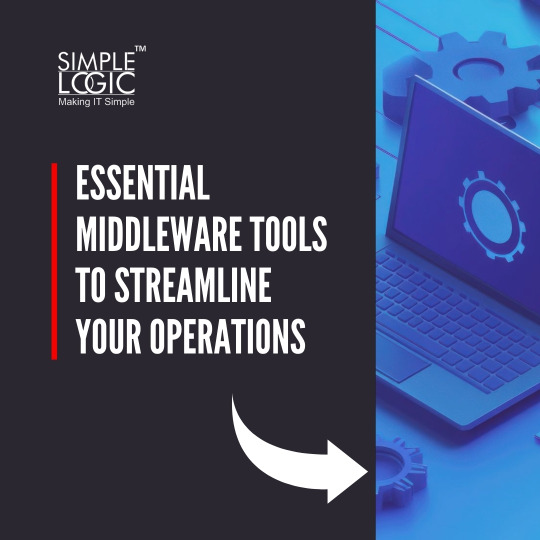
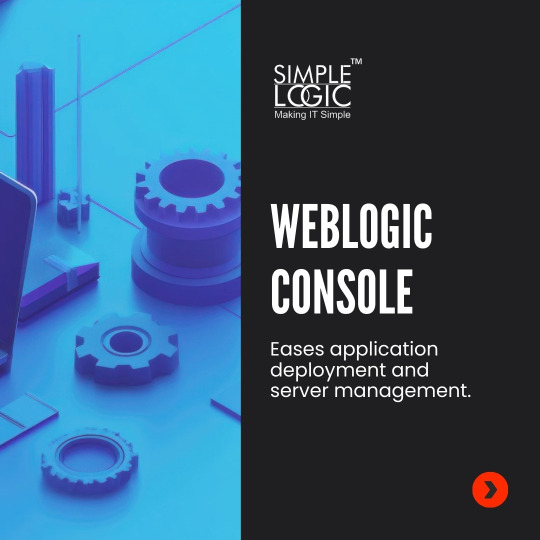
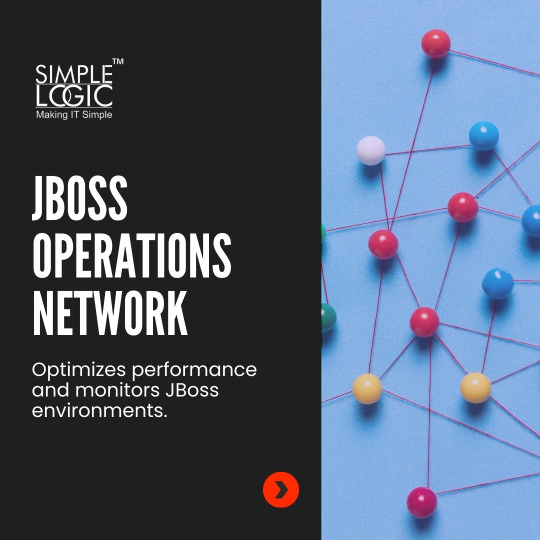
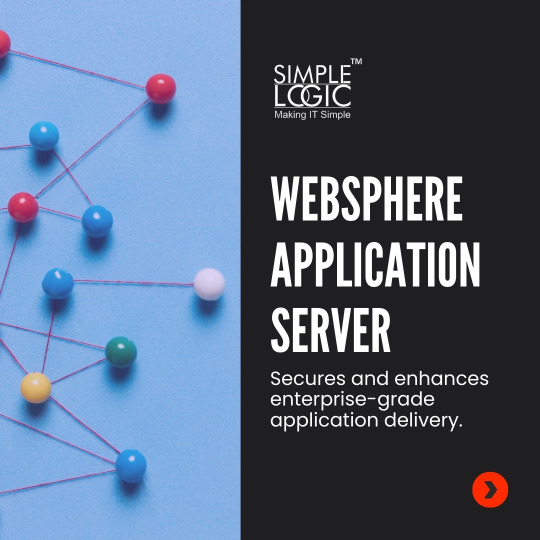

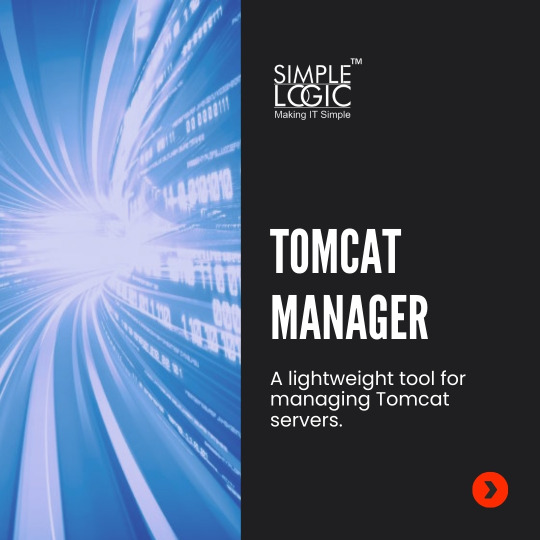
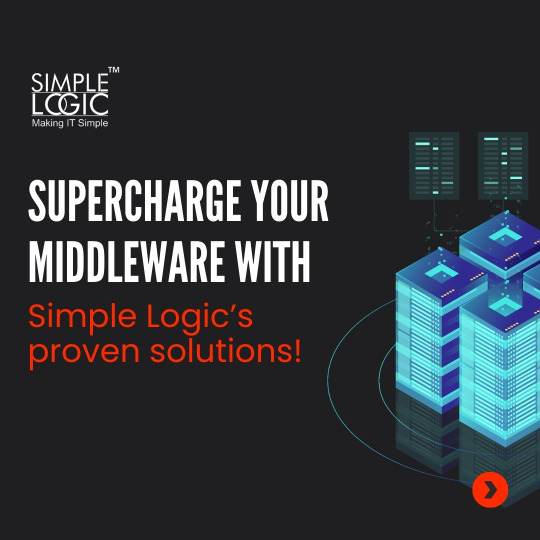
#DidYouKnow What Are The Essential Middleware Tools To Streamline Your Operations🌟
Swipe left to explore!
💻 Explore insights on the latest in #technology on our Blog Page 👉 https://simplelogic-it.com/blogs/
🚀 Ready for your next career move? Check out our #careers page for exciting opportunities 👉 https://simplelogic-it.com/careers/
#didyouknowfacts#knowledgedrop#interestingfacts#factoftheday#learnsomethingneweveryday#mindblown#middleware#weblogicconsole#jboss#websphere#apachekafka#tomcat#applicationserver#didyouknowthat#triviatime#makingitsimple#learnsomethingnew#simplelogicit#simplelogic#makeitsimple
0 notes
Text
Price: [price_with_discount] (as of [price_update_date] - Details) [ad_1] “SOA Design Patterns is an important contribution to the literature and practice of building and delivering quality software-intensive systems.” - Grady Booch, IBM Fellow “With the continued explosion of services and the increased rate of adoption of SOA through the market, there is a critical need for comprehensive, actionable guidance that provides the fastest possible time to results. Microsoft is honored to contribute to the SOA Design Patterns book, and to continue working with the community to realize the value of Real World SOA.” - Steven Martin, Senior Director, Developer Platform Product Management, Microsoft “SOA Design Patterns provides the proper guidance with the right level of abstraction to be adapted to each organization’s needs, and Oracle is pleased to have contributed to the patterns contained in this book.” - Dr. Mohamad Afshar, Director of Product Management, Oracle Fusion Middleware, Oracle “Red Hat is pleased to be involved in the SOA Design Patterns book and contribute important SOA design patterns to the community that we and our customers have used within our own SOA platforms. I am sure this will be a great resource for future SOA practitioners.” - Pierre Fricke Director, Product Line Management, JBoss SOA Platform, Red Hat “A wealth of proven, reusable SOA design patterns, clearly explained and illustrated with examples. An invaluable resource for all those involved in the design of service-oriented solutions.” - Phil Thomas, Consulting IT Specialist, IBM Software Group “This obligatory almanac of SOA design patterns will become the foundation on which many organizations will build their successful SOA solutions. It will allow organizations to build their own focused SOA design patterns catalog in an expedited fashion knowing that it contains the wealth and expertise of proven SOA best practices.” - Stephen Bennett, Director, Technology Business Unit, Oracle Corporation “The technical differences between service orientation and object orientation are subtle enough to confuse even the most advanced developers. Thomas Erl’s book provides a great service by clearly articulating SOA design patterns and differentiating them from similar OO design patterns.” - Anne Thomas Manes, VP & Research Director, Burton Group “SOA Design Patterns does an excellent job of laying out and discussing the areas of SOA design that a competent SOA practitioner should understand and employ.” - Robert Laird, SOA Architect, IBM “As always, Thomas delivers again. In a well-structured and easy-to-understand way, this book provides a wonderful collection of patterns each addressing a typical set of SOA design problems with well articulated solutions. The plain language and hundreds of diagrams included in the book help make the complicated subjects of SOA design comprehensible even to those who are new to the SOA design world. It’s a must-have reference book for all SOA practitioners, especially for enterprise architects, solution architects, developers, managers, and business process experts.” - Canyang Kevin Liu, Solution Architecture Manager, SAP “The concept of service oriented architecture has long promised visions of agile organizations being able to swap out interfaces and applications as business needs change. SOA also promises incredible developer and IT productivity, with the idea that key services would be candidates for cross-enterprise sharing or reuse. But many organizations’ efforts to move to SOA have been mired–by organizational issues, by conflicting vendor messages, and by architectures that may amount to little more than Just a Bunch of Web Services.
There’s been a lot of confusion in the SOA marketplace about exactly what SOA is, what it’s supposed to accomplish, and how an enterprise goes about in making it work. SOA Design Patterns is a definitive work that offers clarity on the purpose and functioning of service oriented architecture. SOA Design Patterns not only helps the IT practitioner lay the groundwork for a well-functioning SOA effort across the enterprise, but also connects the dots between SOA and the business requirements in a very concrete way. Plus, this book is completely technology agnostic―SOA Design Patterns rightly focuses on infrastructure and architecture, and it doesn’t matter whether you’re using components of one kind or another, or Java, or .NET, or Web services, or REST-style interfaces. While no two SOA implementations are alike, Thomas Erl and his team of contributors have effectively identified the similarities in composition services need to have at a sub-atomic level in order to interact with each other as we hope they will. The book identifies 85 SOA design patterns which have been developed and thoroughly vetted to ensure that a service-oriented architecture does achieve the flexibility and loose coupling promised. The book is also compelling in that it is a living document, if you will, inviting participation in an open process to identify and formulate new patterns to this growing body of knowledge.” - Joe McKendrick, Independent Analyst, Author of ZDNet’s SOA Blog “If you want to truly educate yourself on SOA, read this book.” - Sona Srinivasan, Global Client Services & Operations, CISCO “An impressive decomposition of the process and architectural elements that support serviceoriented analysis, design, and delivery. Right-sized and terminologically consistent. Overall, the book represents a patient separation of concerns in respect of the process and architectural parts that underpin any serious SOA undertaking. Two things stand out. First, the pattern relationship diagrams provide rich views into the systemic relationships that structure a service-oriented architecture: these patterns are not discrete, isolated templates to be applied mechanically to the problem space; rather, they form a network of forces and constraints that guide the practitioner to consider the task at hand in the context of its inter-dependencies. Second, the pattern sequence diagrams and accompanying notes provide a useful framework for planning and executing the many activities that comprise an SOA engagement.” - Ian Robinson, Principal Technology Consultant, ThoughtWorks “Successful implementation of SOA principles requires a shift in focus from software system means, or the way capabilities are developed, to the desired end results, or real-world effects required to satisfy organizational business processes. In SOA Design Patterns, Thomas Erl provides service architects with a broad palette of reusable service patterns that describe service capabilities that can cut across many SOA applications. Service architects taking advantage of these patterns will save a great deal of time describing and assembling services to deliver the real world effects they need to meet their organization’s specific business objectives.” - Chuck Georgo, Public Safety and National Security Architect “In IT, we have increasingly come to see the value of having catalogs of good solution patterns in programming and systems design. With this book, Thomas Erl brings a comprehensive set of patterns to bear on the world of SOA. These patterns enable easily communicated, reusable, and effective solutions, allowing us to more rapidly design and build out the large, complicated and interoperable enterprise SOAs into which our IT environments are evolving.” - Al Gough, Business Systems Solutions CTO, CACI International Inc.
“This book provides a comprehensive and pragmatic review of design issues in service-centric design, development, and evolution. The Web site related to this book [SOAPatterns.org] is a wonderful platform and gives the opportunity for the software community to maintain this catalogue….” - Veronica Gacitua Decar, Dublin City University “Erl’s SOA Design Patterns is for the IT decision maker determined to make smart architecture design choices, smart investments, and long term enterprise impact. For those IT professionals committed to service-orientation as a value-added design and implementation option, Patterns offers a credible, repeatable approach to engineering an adaptable business enterprise. This is a must read for all IT architect professionals.” - Larry Gloss, VP and General Manager, Information Manufacturing, LLC “These SOA patterns define, encompass, and comprise a complete repertoire of best practices for developing a world-class IT SOA portfolio for the enterprise and its organizational units through to service and schema analysis and design. After many years as an architect on many SOA projects, I strongly recommend this book be on the shelf of every analyst and technical member of any SOA effort, right next to the SOA standards and guidelines it outlines and elucidates the need for. Our SOA governance standards draw heavily from this work and others from this series.” - Robert John Hathaway III, Enterprise Software Architect, SOA Object Systems “A wise man once told me that wisdom isn’t all about knowledge and intelligence, it is just as much about asking questions. Asking questions is the true mark of wisdom and during the writing of the SOA Design Patterns book Thomas Erl has shown his real qualities. The community effort behind this book is huge meaning that Thomas has had access to the knowledge and experience of a large group of accomplished practitioners. The result speaks for itself. This book is packed with proven solutions to recurring problems, and the documented pros and cons of each solution have been verified by persons with true experience. This book could give SOA initiatives of any scale a real boost.” - Herbjörn Wilhelmsen, Architect and Senior Consultant, Objectware “This book is an absolute milestone in SOA literature. For the first time we are provided with a practical guide on how the principle centric description of service orientation from a vendor-agnostic viewpoint is actually made to work in a language based on patterns. This book makes you talk SOA! There are very few who understand SOA like Thomas Erl does, he actually put’s it all together!” - Brian Lokhorst, Solution Architect, Dutch Tax Office “Service oriented architecture is all about best practices we have learned since IT’s existence. This book takes all those best practices and bundles them into a nice pattern catalogue. [It provides] a really excellent approach as patterns are not just documented but are provided with application scenarios through case studies [which] fills the gap between theory and practice.” - Shakti Sharma, Senior Enterprise Architect, Sysco Corp “An excellent and important book on solving problems in SOA [with a] solid structure. Has the potential of being among the major influential books.” - Peter Chang, Lawrence Technical University “SOA Design Patterns presents a vast amount of knowledge about how to successfully implement SOA within an organization. The information is clear, concise, and most importantly, legitimate.” - Peter B. Woodhull, President and Principal Architect, Modus21 “SOA Design Patterns offers real insights into everyday problems that one will encounter when investing in services oriented architecture. [It] provides a number of problem descriptions and offers strategies for dealing with these problems.
SOA design patterns highlights more than just the technical problems and solutions. Common organizational issues that can hinder progress towards achieving SOA migration are explained along with potential approaches for dealing with these real world challenges. Once again Thomas Erl provides in-depth coverage of SOA terminology and helps the reader better understand and appreciate the complexities of migrating to an SOA environment.” - David Michalowicz, Air and Space Operations Center Modernization Team Lead, MITRE Corporation “This is a long overdue, serious, comprehensive, and well-presented catalog of SOA design patterns. This will be required reading and reference for all our SOA engineers and architects. The best of the series so far! [The book] works in two ways: as a primer in SOA design and architecture it can easily be read front-to-back to get an overview of most of the key design issues you will encounter, and as a reference catalog of design techniques that can be referred to again and again…” - Wendell Ocasio, Architecture Consultant, DoD Military Health Systems, Agilex Technologies “Thomas has once again provided the SOA practitioner with a phenomenal collection of knowledge. This is a reference that I will come back to time and time again as I move forward in SOA design efforts. What I liked most about this book is its vendor agnostic approach to SOA design patterns. This approach really presents the reader with an understanding of why or why not to implement a pattern, group patterns, or use compound patterns rather than giving them a marketing spiel on why one implementation of a pattern is better than another (for example, why one ESB is better than another). I think as SOA adoption continues to advance, the ability for architects to understand when and why to apply specific patterns will be a driving factor in the overall success and evolution of SOA. Additionally, I believe that this book provides the consumer with the understanding required to chose which vendor’s SOA products are right for their specific needs.” - Bryan Brew, SOA Consultant, Booz Allen Hamilton “A must have for every SOA practitioner.” - Richard Van Schelven, Principal Engineer, Ericsson “This book is a long-expected successor to the books on object-oriented design patterns and integration patterns. It is a great reference book that clearly and thoroughly describes design patterns for SOA. A great read for architects who are facing the challenge of transforming their enterprise into a service-oriented enterprise.” - Linda Terlouw, Solution Architect, Ordina “The maturation of Service-Orientation has given the industry time to absorb the best practices of service development. Thomas Erl has amassed this collective wisdom in SOA Design Patterns, an absolutely indispensible addition to any Service Oriented bookshelf.” - Kevin P. Davis, Ph.D “The problem with most texts on SOA is one of specificity. Architects responsible for SOA implementation in most organizations have little time for abstract theories on the subject, but are hungry for concrete details that they can relate to the real problems they face in their environment. SOA Design Patterns is critical reading for anyone with service design responsibilities. Not only does the text provide the normal pattern templates, but each pattern is applied in detail against a background case study to provide exceptionally meaningful context to the information. The graphic visualizations of the problems and pattern solutions are excellent supplementary companions to the explanatory text. This book will greatly stretch the knowledge of the reader as much for raising and addressing issues that may have never occurred to the reader as it does in treating those problems that are in more common occurrence.
The real beauty of this book is in its plain English prose. Unlike so many technical reference books, one does not find themselves re-reading sections multiple times trying to discern the intent of the author. This is also not a reference that will sit gathering dust on a shelf after one or two perusings. Practitioners will find themselves returning over and over to utilize the knowledge in their projects. This is as close as you’ll come to having a service design expert sitting over your shoulder.” - James Kinneavy, Principal Software Architect, University of California “As the industry converges on SOA patterns, Erl provides an outstanding reference guide to composition and integration–and yet another distinctive contribution to the SOA practice.” - Steve Birkel, Chief IT Technical Architect, Intel Corp. “With SOA Design Patterns, Thomas Erl adds an indispensable SOA reference volume to the technologist’s library. Replete with to-the-point examples, it will be a helpful aid to any IT organization.” - Ed Dodds, Strategist, Systems Architect, Conmergence “Again, Thomas Erl has written an indispensable guide to SOA. Building on his prior successes, his patterns go into even more detail. Therefore, this book is not only helpful to the SOA beginner, but also provides new insight and ideas to professionals.” - Philipp Offermann, Research Scientist, Technische Universität Berlin, Germany “SOA Design Patterns is an extraordinary contribution to SOA best practices! Once again, Thomas has created an indispensable resource for any person or organization interested in or actively engaged in the practice of Service Oriented Architecture. Using case studies based on three very different business models, Thomas guides the reader through the process of selecting appropriate implementation patterns to ensure a flexible, well-performing, and secure SOA ecosystem.” - Victor Brown, Managing Partner and Principal Consultant, Cypress Management Group Corporation In cooperation with experts and practitioners throughout the SOA community, best-selling author Thomas Erl brings together the de facto catalog of design patterns for SOA and service-orientation. More than three years in development and subjected to numerous industry reviews, the 85 patterns in this full-color book provide the most successful and proven design techniques to overcoming the most common and critical problems to achieving modern-day SOA. Through numerous examples, individually documented pattern profiles, and over 400 color illustrations, this book provides in-depth coverage of: • Patterns for the design, implementation, and governance of service inventories–collections of services representing individual service portfolios that can be independently modeled, designed, and evolved. • Patterns specific to service-level architecture which pertain to a wide range of design areas, including contract design, security, legacy encapsulation, reliability, scalability, and a variety of implementation and governance issues. • Service composition patterns that address the many aspects associated with combining services into aggregate distributed solutions, including topics such as runtime messaging and message design, inter-service security controls, and transformation. • Compound patterns (such as Enterprise Service Bus and Orchestration) and recommended pattern application sequences that establish foundational processes. The book begins by establishing SOA types that are referenced throughout the patterns and then form the basis of a final chapter that discusses the architectural impact of service-oriented computing in general. These chapters bookend the pattern catalog to provide a clear link between SOA design patterns, the strategic goals of service-oriented computing, different SOA types, and the service-orientation design paradigm.
This book series is further supported by a series of resources sites, including soabooks.com, soaspecs.com, soapatterns.org, soamag.com, and soaposters.com. Publisher : Pearson Education India; First Edition (31 December 2008) Language : English Hardcover : 864 pages ISBN-10 : 0136135161 ISBN-13 : 978-0136135166 Item Weight : 1 kg 720 g Dimensions : 18.42 x 4.45 x 23.5 cm Country of Origin : India [ad_2]
0 notes
Text
Senior Product Engineer
concepts. Experience in Cloud architecture (AWS) Experience in JBoss, Apache Tomcat Experience in Angular, Node and React JS… Apply Now
0 notes
Text
Senior Java FSD
Job title: Senior Java FSD Company: Virtusa Job description: Key Responsibilities:Develop and maintain web applications using Java Spring Boot and Spring Cloud Design and implement user interfaces using HTML CSS JavaScript Angular and React Write and maintain unit tests using Junit and Mockito Deploy and manage applications on servers such as JBoss WebLogic Apache and Nginx Ensure application…
0 notes
Text
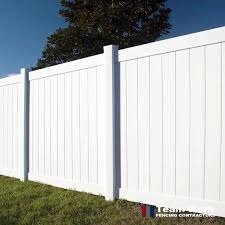
Get the best Fence Painting in Everton Park at JBoss Painting Services. Visit for more info.
0 notes
